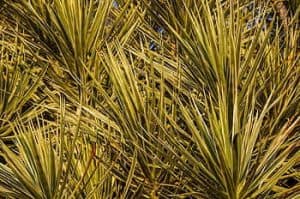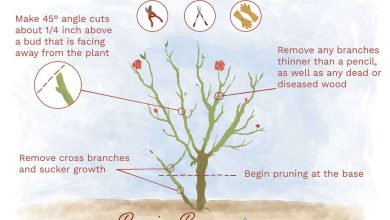Cassava Yellow Leaves: [Concept, Causes, Treatment and Prevention]

Cassava leaves are green by nature, when they turn yellow, it is most likely that you are facing a disease.
 In most cases, this condition occurs when the root of the plant rots and then it is necessary to act to cure it.
In most cases, this condition occurs when the root of the plant rots and then it is necessary to act to cure it.
Although it is a fact that cassava is harvested without the need for much care, its development cannot be lost sight of at any time.
What is this disease?
Yucca yellow leaves is a disease that causes the plant to lose the natural green color that its leaves should have.
When it develops with great force, it can even cause the plant to wither, since it would not be carrying out its processes normally.
What causes yucca yellow leaves?
That a cassava plant has yellow leaves can be due to multiple reasons, all focused on poor work during cultivation.
To define exactly what happens to a specific plant, it will be necessary to evaluate each of the points that encompass the work of cultivation.
How to detect this disease?
To safely detect the reasons that have led to the cassava turning yellow, it is necessary to pay attention to different elements.
Irrigation
 The yucca plant does not need a lot of care, as we have already seen, but that does not exempt it from having a good amount of humidity.
The yucca plant does not need a lot of care, as we have already seen, but that does not exempt it from having a good amount of humidity.
If irrigation is carried out in a very high amount, this could cause it to feel suffocated and get sick, showing yellow leaves.
On the contrary, if it is not offered proper watering , its roots will dehydrate and this will result in yellow leaves. For this reason it is important to pay attention to the irrigation periods, especially on the hottest days of summer.
The roots
Having healthy roots is key so that the yucca plant can develop in optimal conditions. Here the conditions that lead to yellow leaves can be oriented in two ways:
- Rot: when the roots are left in water for a long time and they become slimy and smell bad.
- Binding: occurs when the plant is placed in a place where the roots do not have enough space to expand and grow as they should.
The sunlight
For yucca plants to grow normally they need direct sunlight. Although they are very adaptable, the cold does not suit them at all, so you have to make sure that the temperature they have is above 20º C.
How do we treat yucca yellow leaves?
 When you begin to notice the presence of yellow leaves in cassava, it is necessary to carry out a review of each aspect of the crop.
When you begin to notice the presence of yellow leaves in cassava, it is necessary to carry out a review of each aspect of the crop.
In the event that it is the irrigation system, it will be essential to modify the schedule used, so that the level is reduced or increased.
When it comes to roots, repotting is the best option, either to drier soil or a larger pot. If it is due to sunlight, it will be necessary to move it to a place where it has the opportunity to receive light more directly.
In all these points, what should be verified is which change is causing the yellow leaves to disappear to detect the real problem.
How can we prevent this disease?
 To prevent yellow leaves from appearing on the yucca plant, the first thing is to use stakes that are in very good condition.
To prevent yellow leaves from appearing on the yucca plant, the first thing is to use stakes that are in very good condition.
In addition, the soil chosen must be appropriate, taking care that it is light, without excess moisture and with good space. This action will prevent suffering from root rot or binding disease.
It is also essential to have it in spaces where it receives sunlight and there are no sudden changes in temperature, such as heating or air conditioning. The rest will only have to wait for it to complete its growth process and for the harvest to be very prosperous.
Bibliography and references
- Lozano, J. Carlos. (1982). Description of cassava diseases. Second edition. International Center for Tropical Agriculture (CIAT). Cali, Colombia.
- Alvarez, Elizabeth; Bellotti, Anthony; Calvert, Lee; Arias, Bernardo; Cadavid, Luis F.; Pineda, Benjamin; Llano German; Raven, Maritza. (2002). Practical guide for the management of diseases, pests and nutritional deficiencies of cassava. International Center for Tropical Agriculture (CIAT). Cali, Colombia.
- Cock, James H. (1989). yucca New potential for a traditional crop. International Center for Tropical Agriculture (CIAT). Cali, Colombia.
- Alvarez, Elizabeth; Plain, German. (2008). Cassava Crop Diseases and Control Methods. Reproduced from: https://cgspace.cgiar.org/bitstream/handle/10568/55242/chapter08.pdf?sequence=1

![Photo of Shepherd’s Purse: [Cultivation, Irrigation, Care, Pests and Diseases]](https://www.complete-gardening.com/wp-content/uploads/2022/08/shepherds-purse-cultivation-irrigation-care-pests-and-diseases.jpg)
![Photo of Carmona Bonsai Care: [Earth, Humidity and Pruning]](https://www.complete-gardening.com/wp-content/uploads/2022/08/carmona-bonsai-care-earth-humidity-and-pruning-390x220.jpg)

![Photo of Onion Miner (Acrolepia assectella): [Characteristics, Detection, Effects and Treatment]](https://www.complete-gardening.com/wp-content/uploads/2022/08/onion-miner-acrolepia-assectella-characteristics-detection-effects-and-treatment-390x220.jpg)